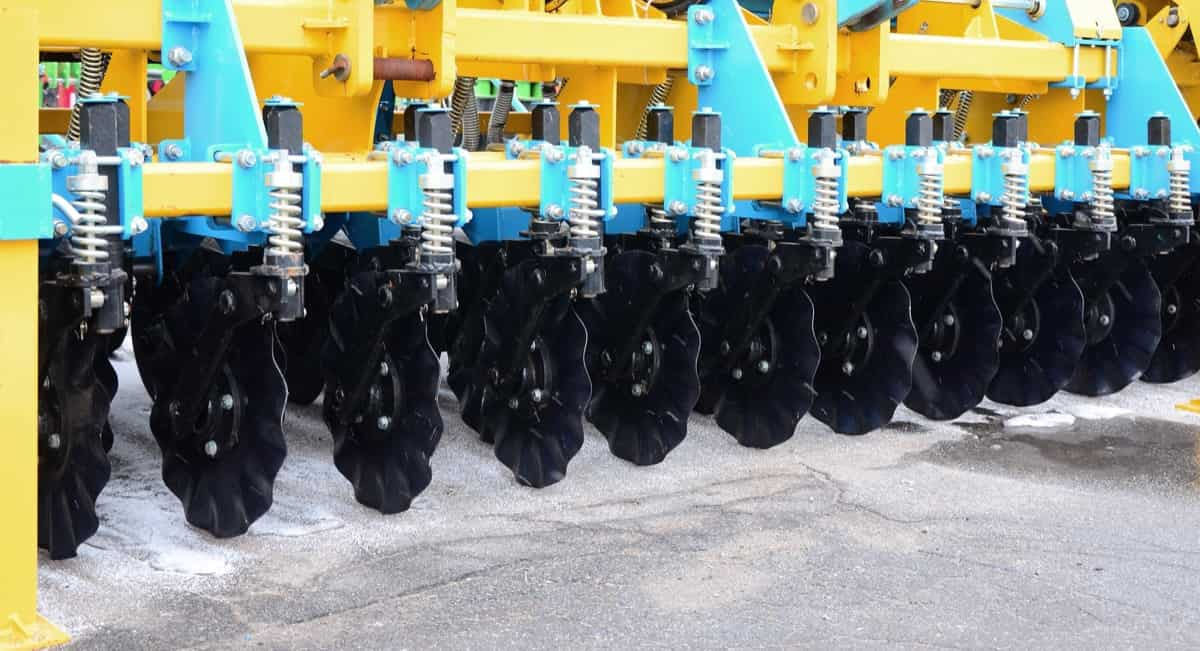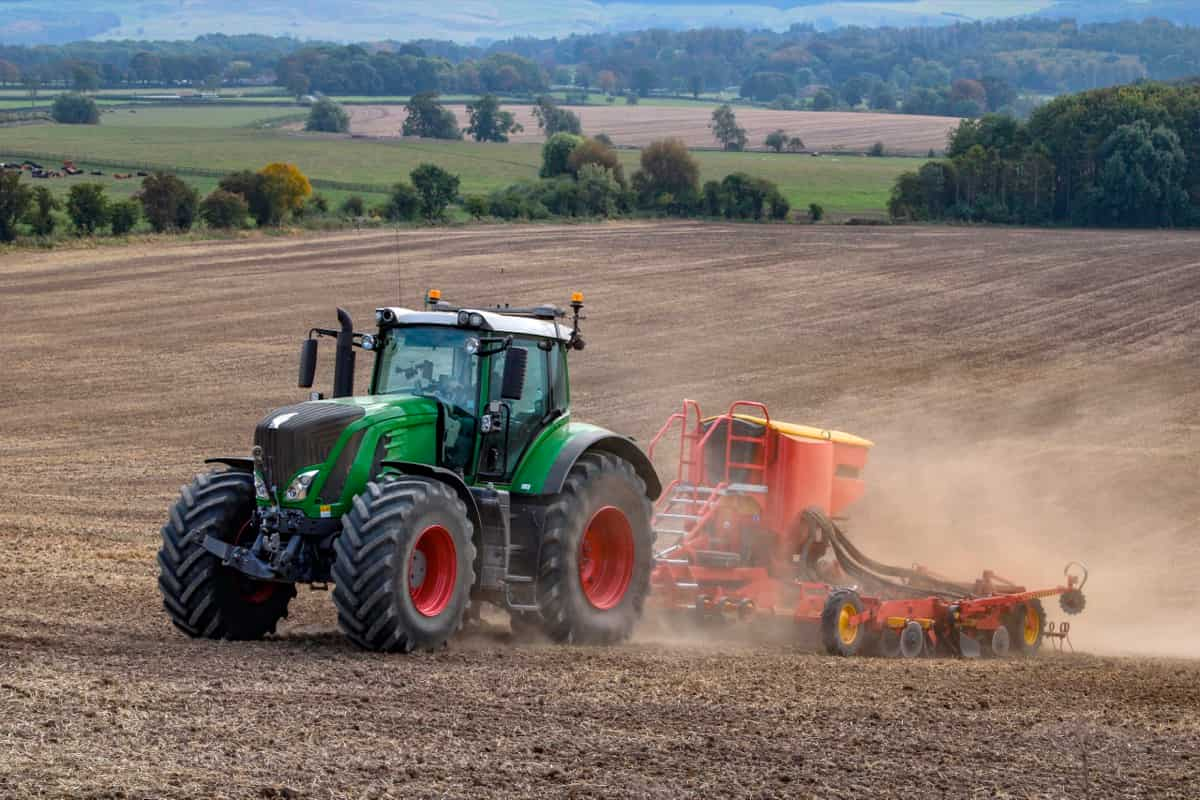Seed drills have become crucial in field machinery in today’s agricultural system. They are used to use sowing seeds with great accuracy and efficiency, enabling farmers to increase their harvests while decreasing input costs. The well-being of Earth’s population depends on farmers who can grow food in a way that doesn’t destroy the environment. Farmers can save money on water and fertilizer by using seed tools to plant their crops more efficiently.

Seed drills also encourage biodiversity by enabling farmers to grow cover crops and rotate crops, reducing the rate at which soil is depleted. Seed drills contribute to a stronger and environmentally friendly farming structure. This article will examine the merits of seed drills and how they can help farmers achieve more efficient and environmentally friendly crop production.
Benefits of Using Seed Drills in Agriculture
What is a Seed Drill?
A seed drill is a machine used for sowing seeds precisely in the soil at the proper depth and distance. It covers the seeds with soil, protecting them from birds and saving time and labor. It was invented by Jethro Tull, though the Sumerians and Chinese used earlier versions. Using a seed drill can increase the crop yield ratio by up to nine times.
Before the introduction of the seed drill, seeds were planted by hand broadcasting, which was a wasteful process with poor distribution and low productivity. The seed drill improved the crop yield ratio and saved time and labor. Planters are machines used for metering seeds for planting, and the concept was taken from ancient mechanisms that deposited seeds down a tube. The seed drill can be attached to a tractor for sowing in well-spaced rows at specific depths and rates, allowing weed control.
Different Types of Seed Drills Available in the Market
- The seed-cum-fertilizer drill, for example, is equipped with a fertilizer-dropping attachment that distributes fertilizer evenly across the area. It has a large seedbox split into two sections for seeds and fertilizer.
- Another variety is the manually metered seed drill, which bullocks draw or control. In this variety, the seed is manually dropped into the furrows.
- On the other hand, the mechanically metered seed drill meters the seeds using a mechanical instrument known as the seed metering mechanism.
- Tractor-drawn seed drills are also common for efficient sowing because they can be easily attached to a tractor. Modern seed drills are outfitted with GPS mapping and automatic seed rate control to guarantee accurate sowing and optimum yield.
Functions and Components of Seed Drills
Functions of Seed Drills
- Precisely meter the size and shape of the seeds
- Sow seeds accurately and uniformly at the desired depth and in a pattern.
- Cover seeds with soil and compact the soil around them to enhance germination.
- Carry seeds and open furrows to a uniform depth.
In case you missed it: How to Start a Farm Machinery Business: A Profitable Agriculture Idea

Components of Seed Drills
- Frame made of angle iron with braces and brackets.
- Seedbox made of mild steel or galvanized iron with a suitable cover and sometimes a small agitator to prevent seed clogging.
- Seed metering mechanism with many types like fluted feed, internal double run, cup feed, cell feed, brush feed, auger feed, picker wheel, or starwheel mechanism.
- Furrow openers.
- Covering devices like Patta, chains, drags, packers, rollers, or press wheels.
- Transport wheels that transmit power to operate the seed-dropping mechanism.
Advantages Of Using Seed Drill For Sowing
- Time-saving: Seed drill saves the farmer’s time by sowing seeds in a set time period. It makes crop establishment faster than traditional ways.
- Accuracy in seed sowing: Seed drill provides a higher level of accuracy than manual sowing, saving time and labor costs.
- Perform well in challenging conditions: Seed drill performs well in challenging conditions, achieving grain position even when conditions aren’t at their best.
- Money-saving: Seed drill is efficient and has a greater work rate, bringing the advantage of cheaper costs in terms of both labor and machinery. It gives less soil erosion and less wasted resources, resulting in lower costs.
Seed Drill and Seed-Cum Fertilizer Drill Calibration
- Determine the drill’s nominal width.
- Calculate the length of a strip having the nominal width.
- Calculate the number of revolutions the ground wheel has to make to cover the strip’s length.
- Jack up the drill and mark the drive wheel and the drill’s body.
- Add seed and fertilizer to the hopper and place containers below each boot.
- Adjust the rate control for maximum drilling and note the position of the control.
- Engage the clutch and rotate the drive wheel at the calculated speed.
- Weigh the quantity of seed and fertilizer dropped from each opener and record it.
- Calculate the seed and fertilizer dropped in kg/hectare and record them.
- Repeat the process by adjusting the rate control until the desired seeding and fertilizer drop rates are achieved.
Best Brands in the Market that Offer High-Quality Seed Drills
- John Deere is a well-known company that produces advanced agricultural equipment such as seed drills. They provide various seed drills with advanced features, ranging from small to large. Wheat, maize, oilseeds, soybeans, pulses, and millets perform best in all soil types.
- Great Plains provides a variety of seed drill models suitable for no-till, minimum-till, and conventional tillage operations. They have a variety of drills that can be used for different crops.
- Case IH seed drills are intended to plant wheat, corn, and soybean crops. They include sophisticated features such as precision planting and depth control.
- Kubota seed drills are intended to provide precise seeding for various crops. They have simple adjustment features as well as sophisticated metering systems.
- Horsch provides a variety of seed drills that are intended for efficient and accurate crop seeding. They include sophisticated features such as electronic seed rate control and GPS navigation.
Note: John Deere Fertilizer Drill SD1009, Jagatjit Zero Seed Drill 11 Tynes, Dasmesh Seed Drill Machines, Mahindra SDCT11 Seed Drill, and Landforce Zero Till Drill are the best standard and popular seed drill machinery in Indian Market.
In case you missed it: Biochar in Agriculture: How it Enrich the Soils and Increases the Crop Yields

Conclusion
Effective planting, higher crop yields, and less soil erosion are just a few ways seed drills have changed modern agriculture. Farmers who use this technology can increase their yields without negatively impacting the ecosystem or their ability to sustain the world.
- Feed Your Flock for Less: Top 10 Tips to Save on Chicken Feed
- Ultimate Guide to Ossabaw Island Hog: Breeding, Raising, Diet, and Care
- Hatching Answers: The Top 10 Reasons Your Chickens Aren’t Laying Eggs
- Eggs and Economics: Breaking Down the Cost of Raising Backyard Chickens
- Defend Your Greens: Proven Methods to Keep Iguanas Out of Your Garden
- Ultimate Guide to Cinnamon Queen Chicken: A Comprehensive Guide for Beginners
- Ultimate Guide to California Tan Chicken: Breeding, Raising, Diet, Egg-Production and Care
- Ultimate Guide to Marsh Daisy Chicken: Breeding, Raising, Diet, and Care
- 10 Types of Chicken Farming Businesses You Can Start for Profits